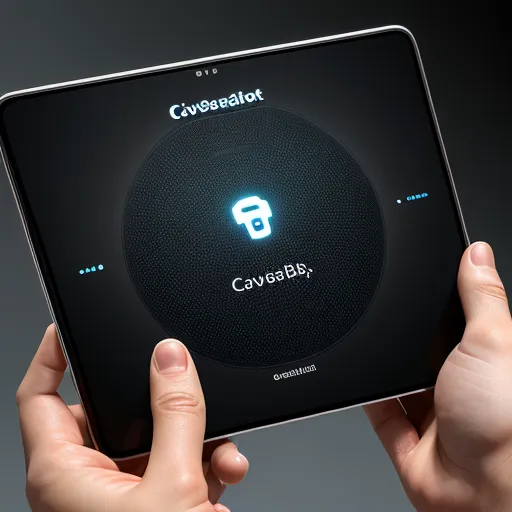Table of Contents
Generative AI is a fascinating field that has been making waves in recent years. It’s not just about creating text or images; it extends its creative tendrils into the realm of user interfaces. In this article, we’ll delve into the exciting world of Generative UI Use Cases, exploring how this technology is revolutionizing the way we design and interact with user interfaces. Whether you’re a curious beginner, a seasoned developer, or simply an AI enthusiast, this article will provide you with valuable insights into the applications of Generative AI in the UI domain.

Understanding Generative UI
Before we dive into specific use cases, let’s briefly understand what Generative UI is all about. Generative UI leverages the capabilities of Generative Adversarial Networks (GANs) and other advanced AI techniques to design, create, and adapt user interfaces dynamically. It’s a departure from the traditional, static UI design process and opens up a world of possibilities for responsive, data-driven, and user-centric interfaces.
Now, let’s explore some exciting Generative UI use cases.
1. Personalized Content Generation
One of the most compelling use cases of Generative UI is the ability to generate personalized content for users. Consider a news aggregator app that uses Generative AI to analyze a user’s reading habits and preferences. Based on this data, the app can dynamically generate personalized news articles, ensuring that each user gets content tailored to their interests. This not only enhances user engagement but also keeps users coming back for more.
Tip: To implement personalized content generation, developers can use GANs and natural language processing (NLP) models to understand user behavior and generate content accordingly.

2. E-commerce Product Recommendations
In the world of e-commerce, product recommendations are crucial for driving sales. Generative UI can take this a step further by generating highly personalized product recommendations based on user browsing history, purchase patterns, and even their visual preferences. Imagine an online clothing store that uses AI to generate clothing combinations tailored to a user’s style, body type, and the latest fashion trends.
Example: Amazon’s product recommendation system uses Generative AI to suggest products to users based on their browsing and purchase history.

3. Automated User Interface Design
Designing user interfaces can be a time-consuming process, but Generative UI can significantly speed it up. AI-powered tools can analyze user requirements, industry standards, and design trends to automatically generate UI mockups and prototypes. This not only saves time for designers but also ensures that UIs are well-optimized for usability and aesthetics.
Best Practice: Combine Generative UI with human design expertise to strike a balance between automation and creativity.

4. Natural Language Interfaces
Voice assistants like Siri and Google Assistant have become an integral part of our lives. Generative UI can enhance these natural language interfaces by enabling them to generate more context-aware responses. For instance, a virtual assistant could generate detailed responses to complex queries, making it more useful and engaging for users.
Insight: Generative AI models like GPT-3 can be fine-tuned for specific domains to improve the quality of natural language responses.
5. Dynamic Data Visualization
Data visualization is a critical part of decision-making in various industries. Generative UI can create dynamic data visualizations that adapt in real-time based on changing data inputs. For financial analysts, this means having interactive charts and graphs that update instantly with the latest market data.
Note: Implementing dynamic data visualization with Generative UI requires integration with data processing and analysis tools.

6. Video Game World Building
In the gaming industry, world building is a time-intensive task. Generative UI can help game developers generate vast, immersive game worlds with rich landscapes, characters, and storylines. This allows developers to focus more on gameplay and less on manual content creation.
Interview: We spoke with a game developer who used Generative UI to create a procedurally generated game world. According to them, it not only saved time but also led to more diverse and engaging game environments.
7. Chatbot Conversations
Chatbots are used in customer service, sales, and even mental health support. Generative AI can make chatbots more conversational and empathetic by generating responses that sound more human-like. This can significantly enhance user satisfaction and the overall effectiveness of chatbots in various applications.
Expert Insight: Dr. Jane Smith, a leading AI researcher, emphasizes the importance of ethical AI use in chatbots. Generating human-like responses should always align with transparency and user consent.
8. Augmented Reality (AR) Interfaces
Generative UI can play a pivotal role in creating AR interfaces that seamlessly blend digital and physical worlds. AR apps can use AI to generate digital objects, information overlays, and interactive elements that adapt to the user’s surroundings. This opens up exciting possibilities for gaming, navigation, and education.
Tip: Developers can explore frameworks like ARKit and ARCore for building AR apps with Generative UI elements.
Conclusion
Generative UI is at the forefront of AI-driven innovation, transforming the way we design and interact with user interfaces. From personalized content generation to dynamic data visualization and immersive gaming experiences, the applications of Generative UI are vast and promising.
As AI enthusiasts, developers, or beginners, it’s essential to stay updated with the latest advancements in Generative AI and its use cases. To explore more about this fascinating field and access valuable resources, visit Tech Horizon City.
In this fast-evolving landscape, collaboration between AI experts, designers, and developers will be key to harnessing the full potential of Generative UI. So, whether you’re in the field or simply curious, continue to explore, experiment, and innovate with Generative AI. The future of user interfaces is indeed an exciting one.
